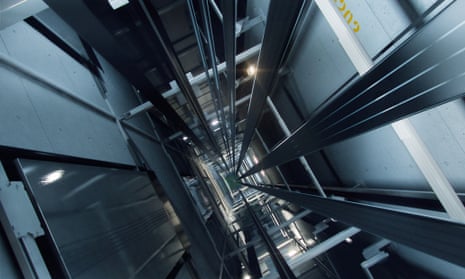Find Trustworthy Lift Repair Near Me for Rapid and Affordable Service
Find Trustworthy Lift Repair Near Me for Rapid and Affordable Service
Blog Article
Looking Into the Globe of Lifts: Typical Issues Encountered by Various Lift Systems
As we navigate through the vertical transport systems of contemporary structures, lifts stand out as an essential component of our day-to-day lives. From hydraulic elevators to traction systems and machine-room-less designs, each lift kind comes with its collection of usual issues.
Hydraulic Elevators
Hydraulic elevators, commonly chosen for low-rise buildings, make use of fluid stress to control the activity of the lift vehicle (lift repair companies). This mechanism includes a hydraulic pump pressing oil into a cylinder, causing the lift to relocate the wanted direction. While hydraulic lifts are understood for their smooth and quiet procedure, they do come with their very own set of common issues
One widespread issue with hydraulic elevators is oil leak. In addition, issues with the control system, such as damaged valves or a malfunctioning pump, can cause disruptions in the elevator's activity.
Normal upkeep and timely repairs are necessary to make sure the smooth functioning of hydraulic elevators. By dealing with these typical problems proactively, building owners can decrease downtime and ensure the security and effectiveness of their vertical transportation system.
Traction Elevators
When thinking about vertical transport systems in buildings, an additional common kind besides hydraulic lifts is the traction lift. Traction lifts operate using a system of ropes and counterweights that move the lift automobile by gripping onto the hoist ropes. This mechanism permits for smoother and much faster vertical transport compared to hydraulic systems.
Among the typical concerns dealt with by grip elevators is rope wear. The constant motion of the ropes within the grip system can lead to deterioration gradually, possibly causing the elevator to breakdown or come to be hazardous for usage. Routine evaluations and upkeep of the ropes are vital to guarantee the lift's appropriate performance and safety.
An additional issue that traction lifts may come across is connected to the control system. Troubles with the control system can cause problems such as irregular activity, delays in action times, or even full closures. Routine testing and upkeep of the control system are crucial to stop such concerns and make certain the elevator's dependability.
Machine-Room-Less (MRL) Lifts

Among the vital elements of MRL elevators is the small gearless grip device that is installed within the hoistway. This machine effectively drives the lift car without the demand for large devices located in typical traction lifts. Furthermore, MRL lifts click reference typically utilize a weight system to stabilize the car, more boosting their energy performance.
Despite their advantages, MRL lifts may encounter challenges associated with repair and maintenance due to the confined space for tools installment. Accessibility for servicing elements within the shaft can be restricted, needing specialized training for service technicians. Proper upkeep schedules and regular evaluations are crucial to ensure the continued smooth procedure of MRL lifts.
Overloading and Weight Limitation Issues
Straining and weight restriction problems are important concerns in elevator operations. Lift makers design raises with details weight capacities to guarantee traveler security and equipment durability.
When lifts are overloaded, it places excessive stress on the motor, cable televisions, and other elements, possibly creating failures or malfunctions. Safety and security devices such as sensing units and overload sensors are in place to avoid lifts from relocating if they discover excess weight. Additionally, exceeding weight limitations can result in raised power intake and deterioration on the lift system.
To alleviate straining issues, constructing managers ought to prominently show weight limitations in elevators and enlighten residents on the significance of sticking to these limitations - lift repair companies. Routine maintenance checks by certified technicians can also aid guarantee that lifts are running within risk-free weight parameters. By dealing with overloading and weight limitation concerns proactively, building owners can improve elevator safety and performance
Electrical System Failings
Exceeding weight restrictions in lifts can not just lead to mechanical concerns yet also possibly contribute to electrical system failures within the lift infrastructure. Electric system failings are an essential concern in lift operation, as try this out they can create unanticipated closures, breakdowns, or also security risks.
Moreover, power rises or variations in the electrical supply can also interfere with the lift's procedure, affecting its performance and safety. These electric disturbances can damage sensitive lift components such as control panels, motherboard, or sensors, bring about system failings. Regular maintenance and assessments are essential to identify and resolve potential electrical issues quickly, making certain the effective and safe operation of lift systems. By adhering to weight restrictions and carrying out routine electric system checks, building proprietors can mitigate the risk of electric failures in elevators.
Verdict

Hydraulic elevators, often favored for low-rise structures, utilize fluid stress to manage the motion of the elevator vehicle.When thinking about upright transportation systems in buildings, another typical type aside from hydraulic lifts is the traction lift. Traction elevators operate using a system of ropes and counterweights that relocate the elevator vehicle by gripping onto the hoist ropes. Unlike traditional elevators that need a different equipment space to house the equipment, view it now MRL lifts incorporate many of the elements within the shaft, getting rid of the demand for a devoted device room.In final thought, elevators face typical concerns such as hydraulic malfunctions, grip system failures, and electrical system issues.
Report this page